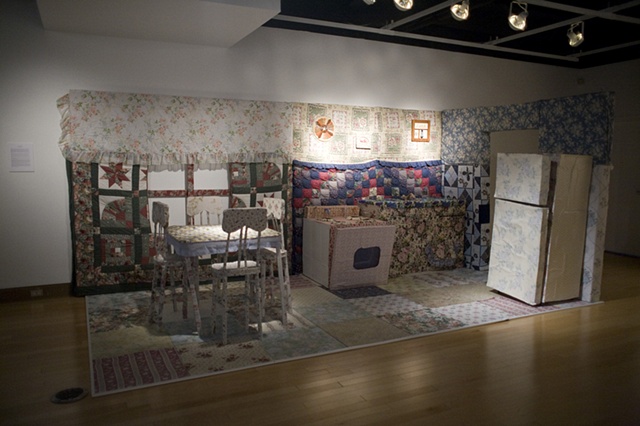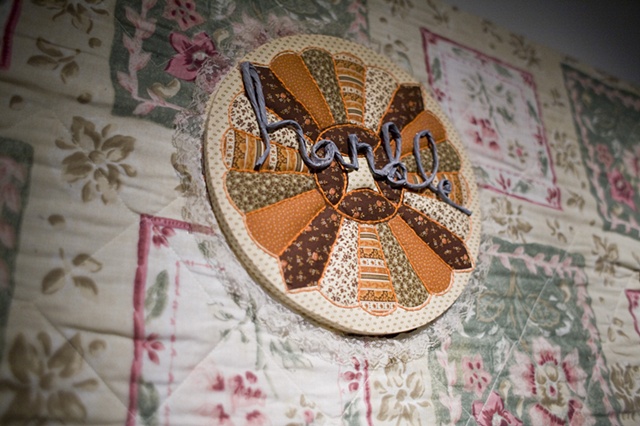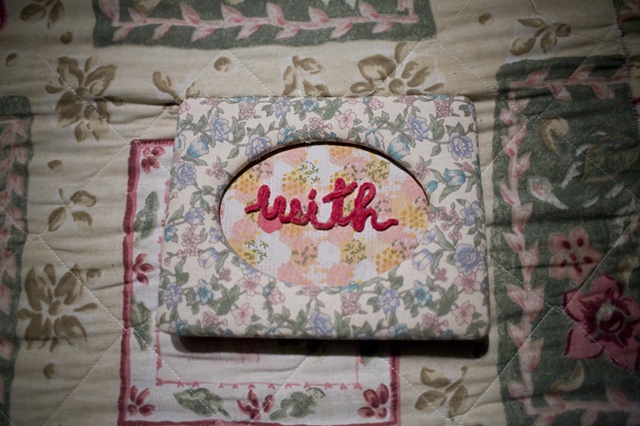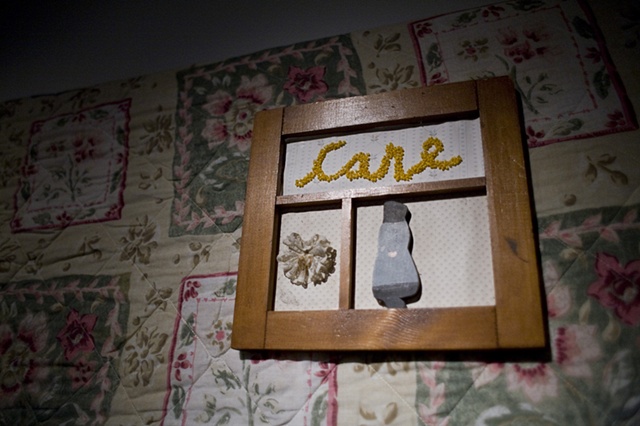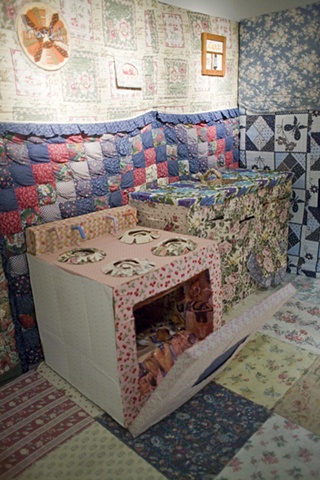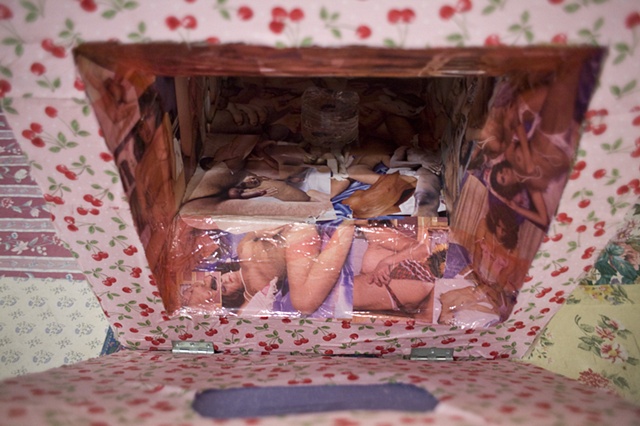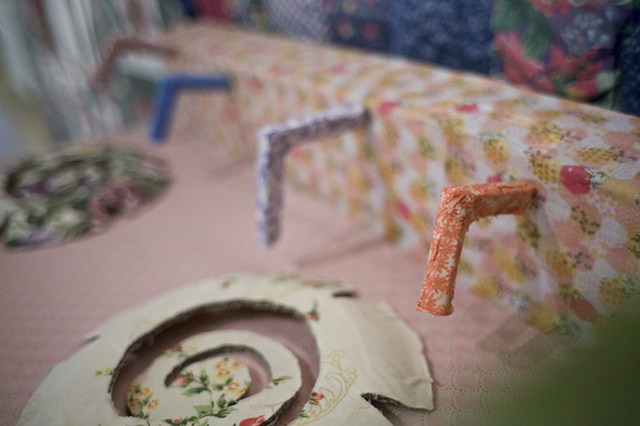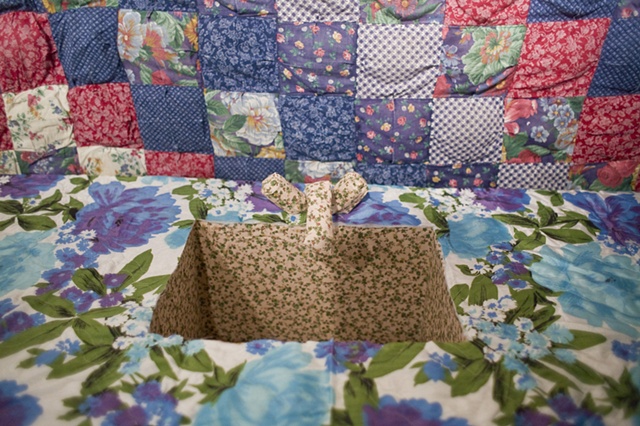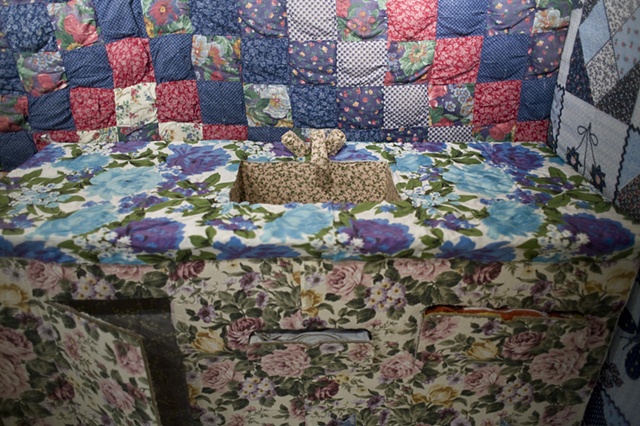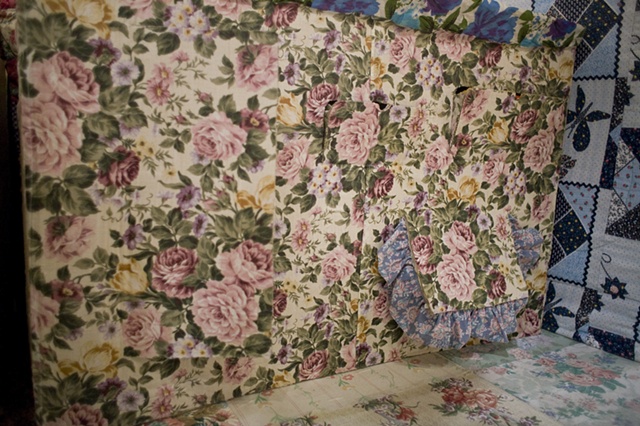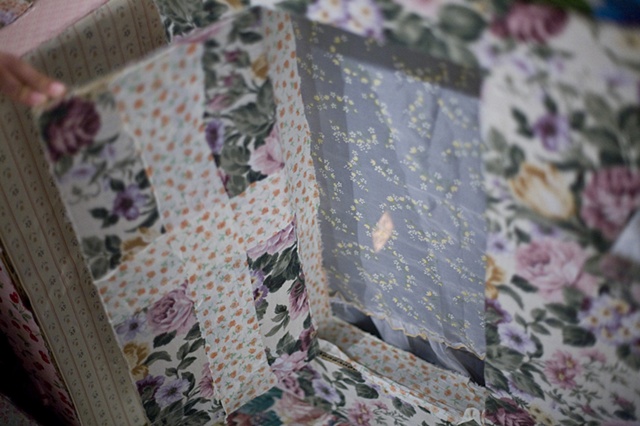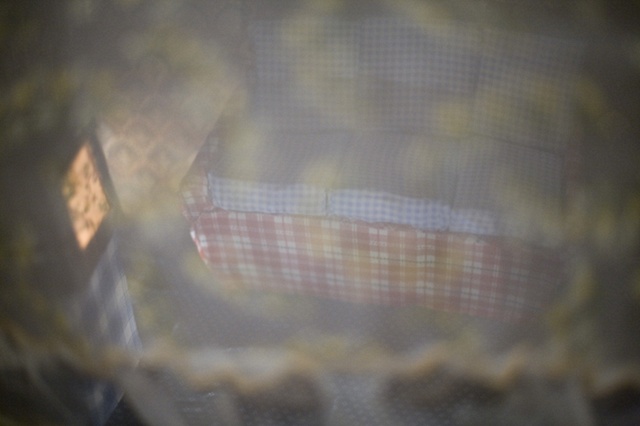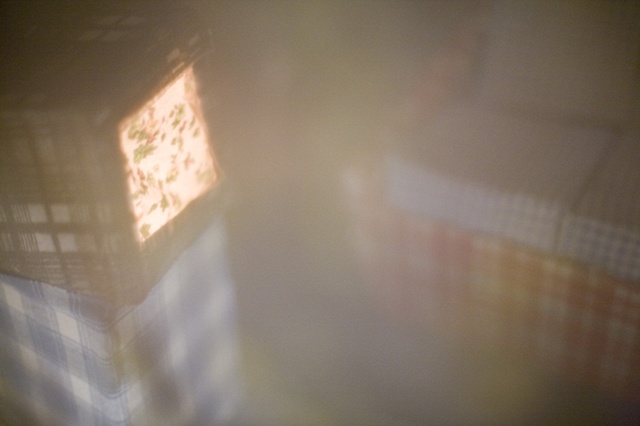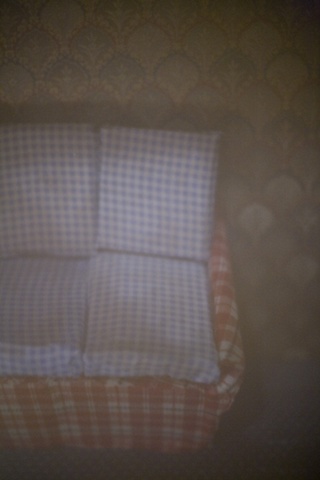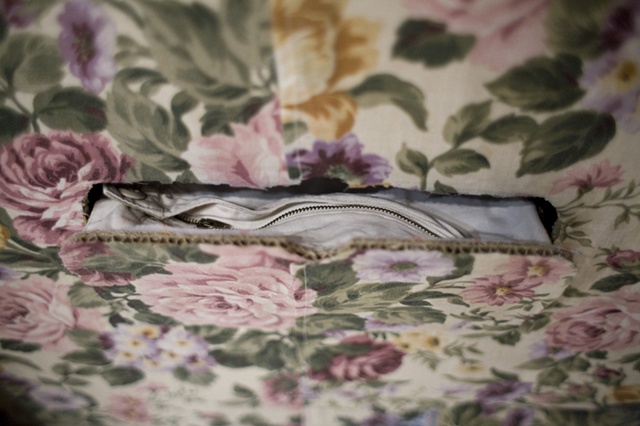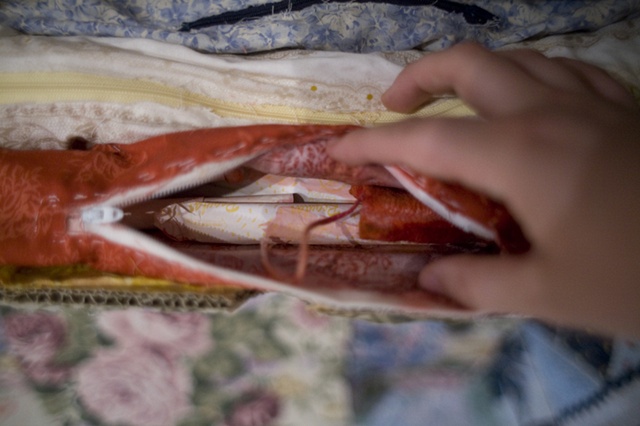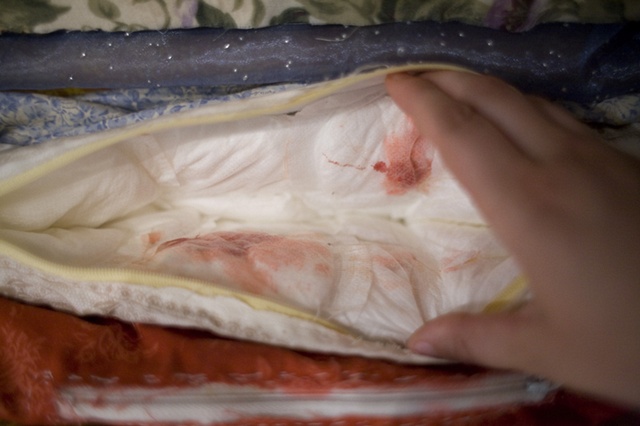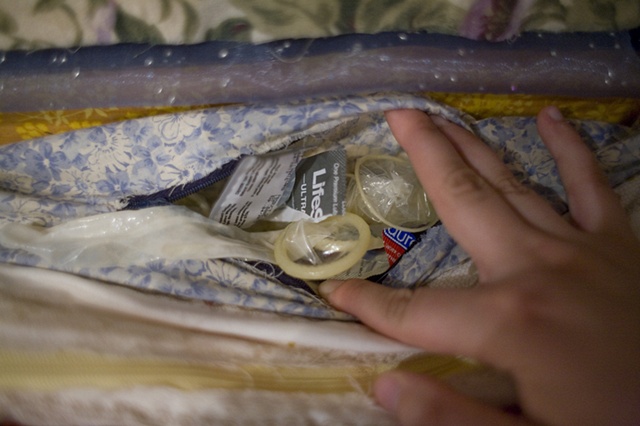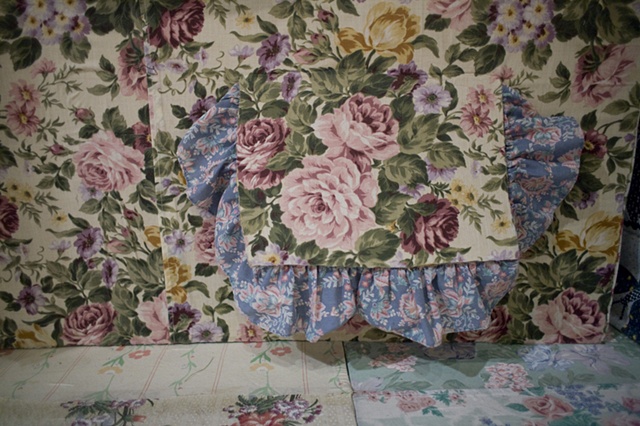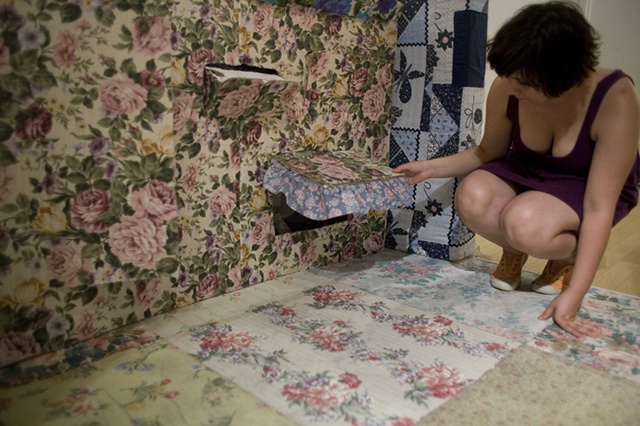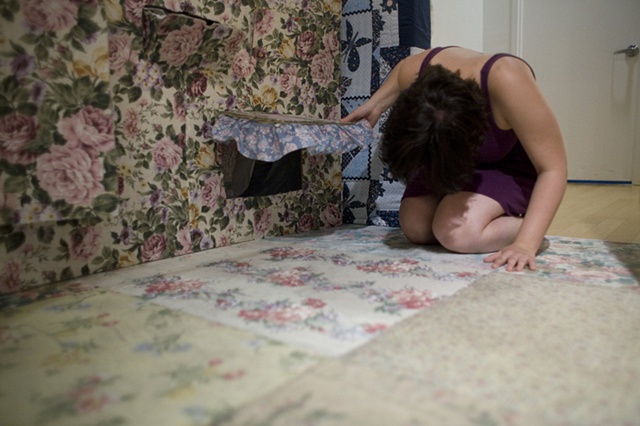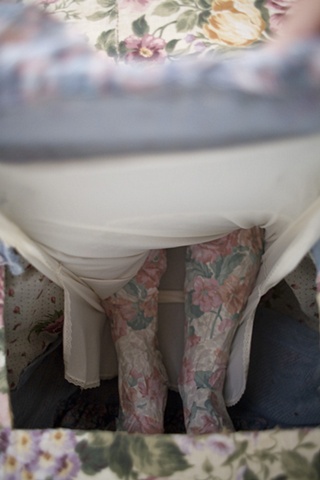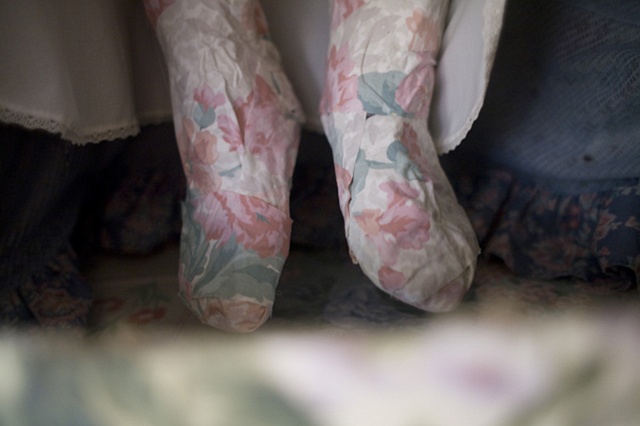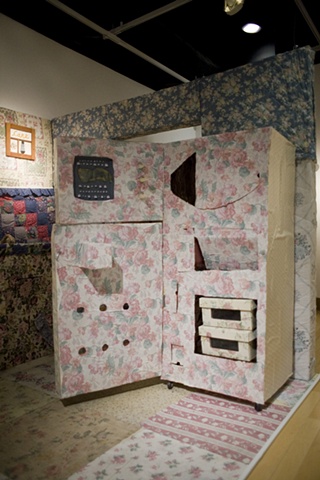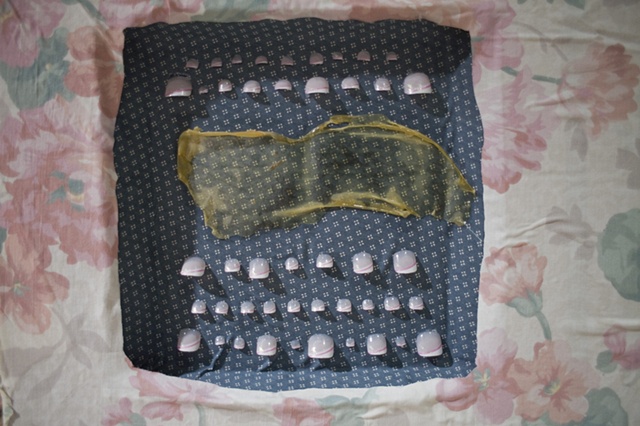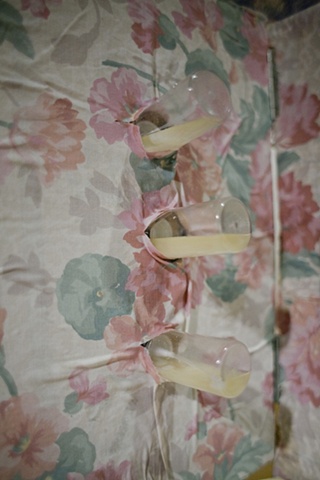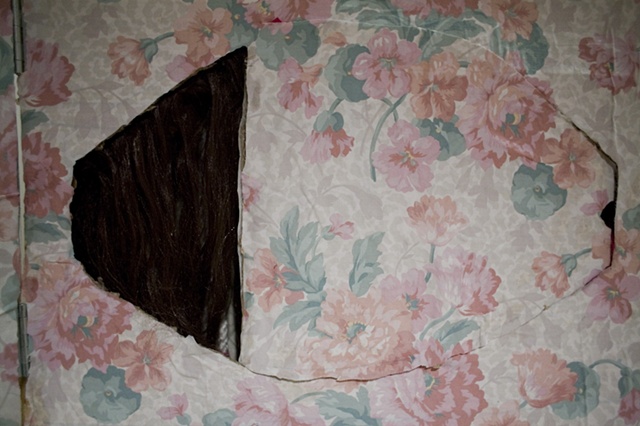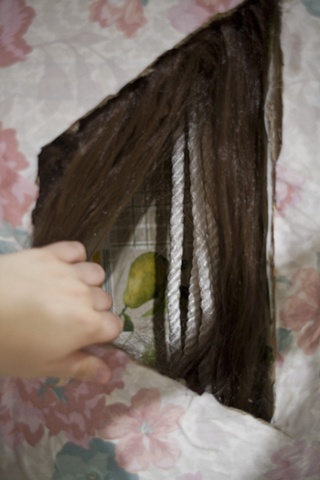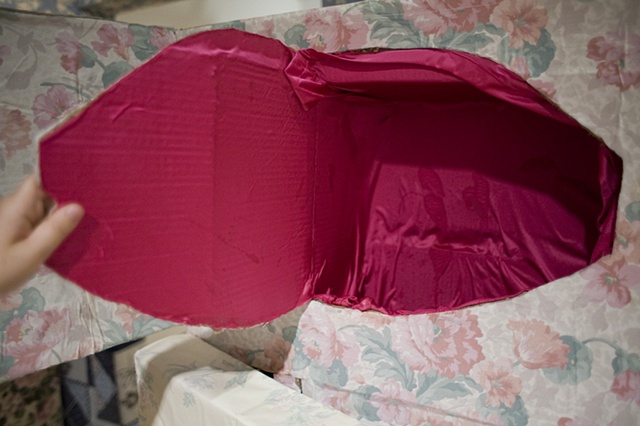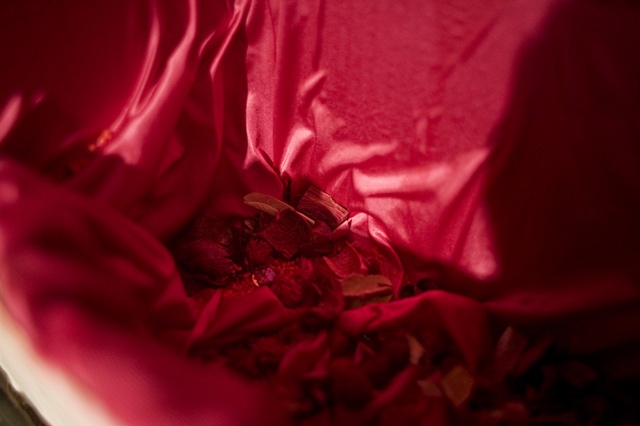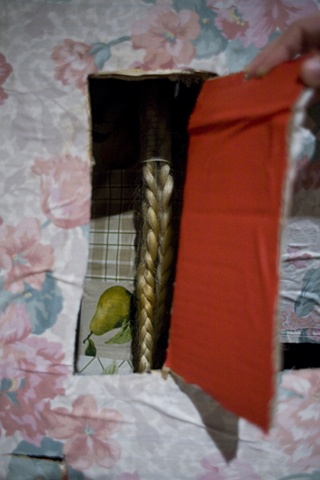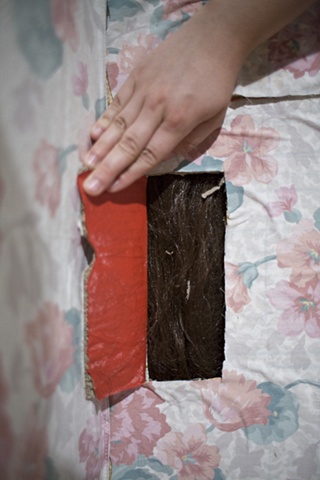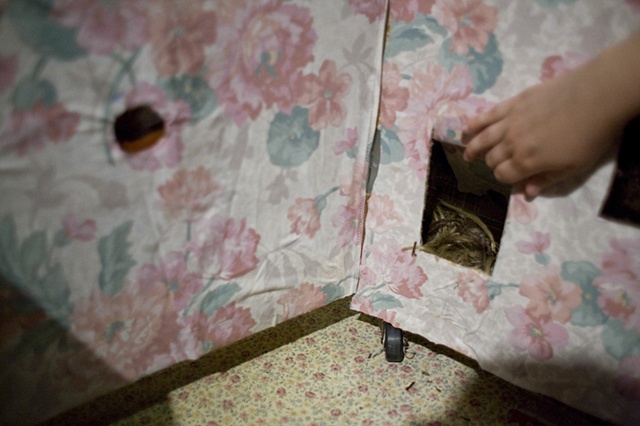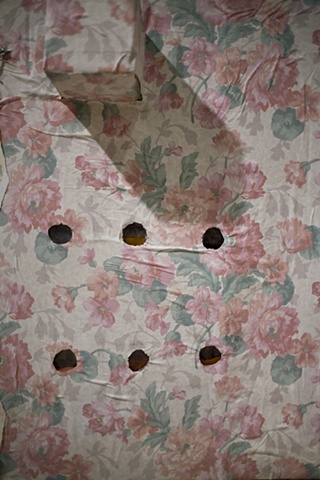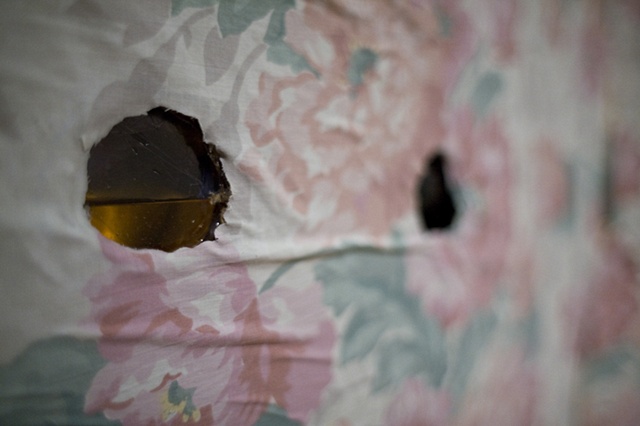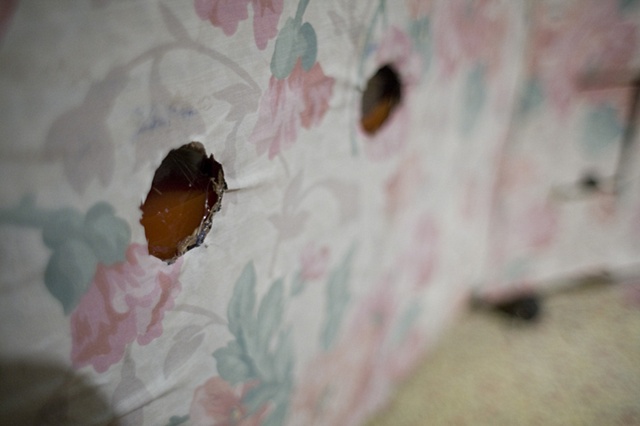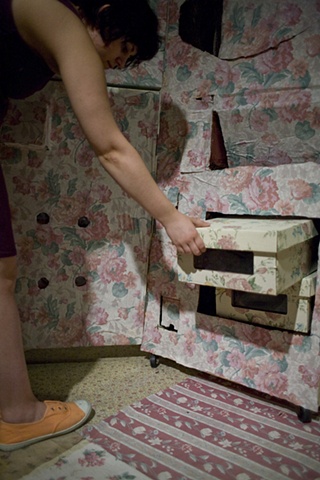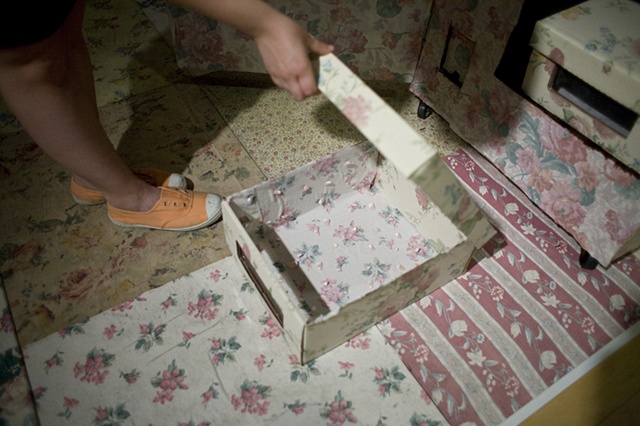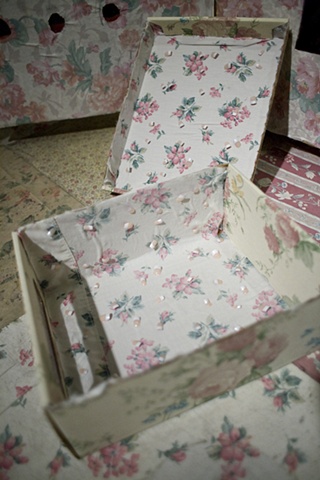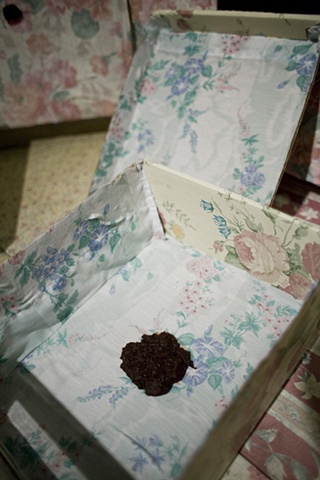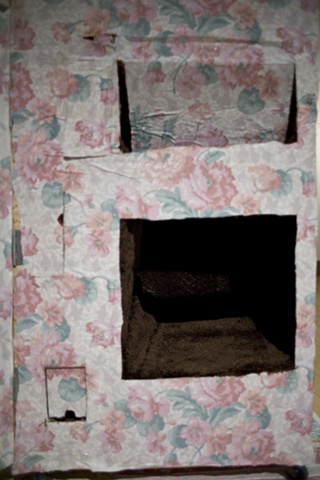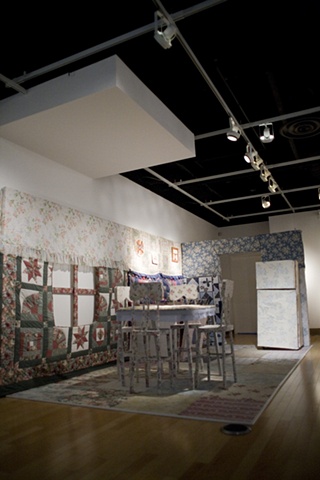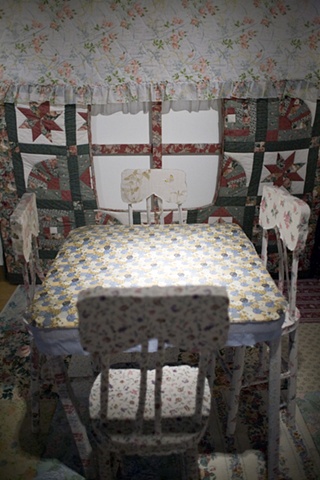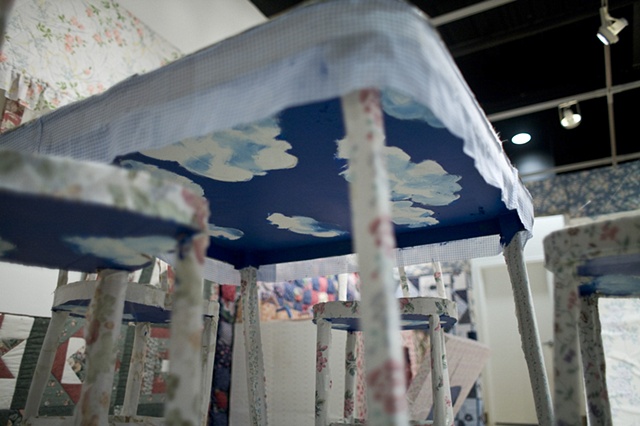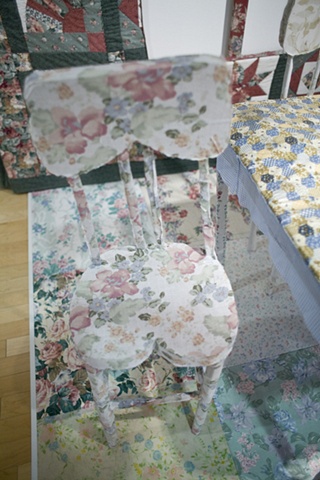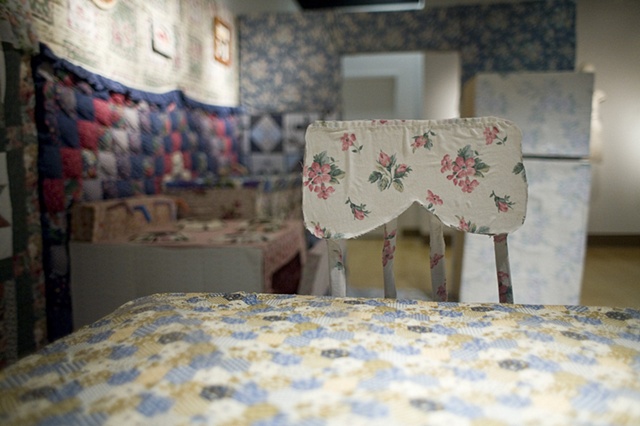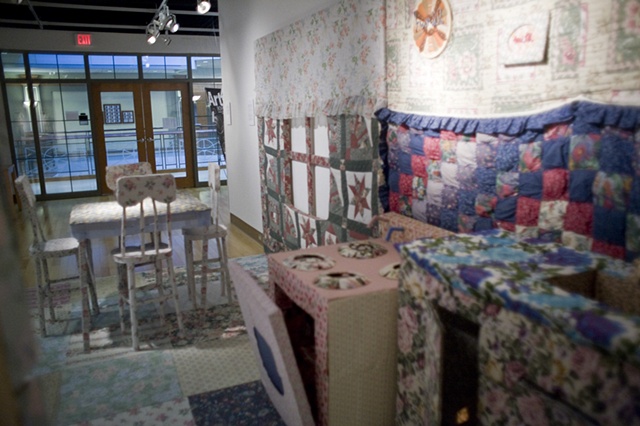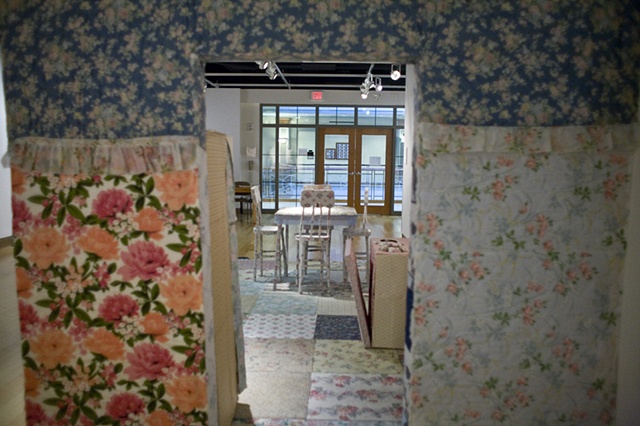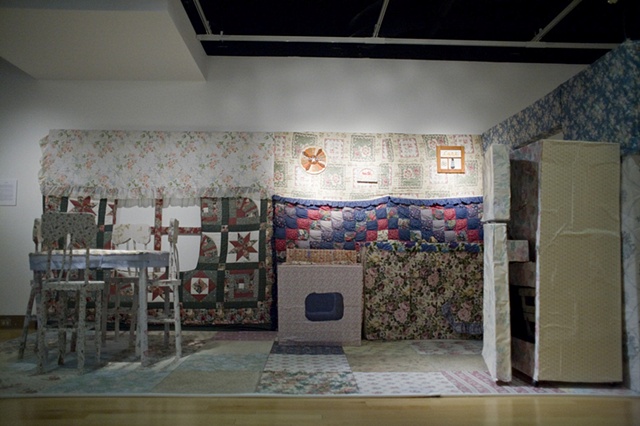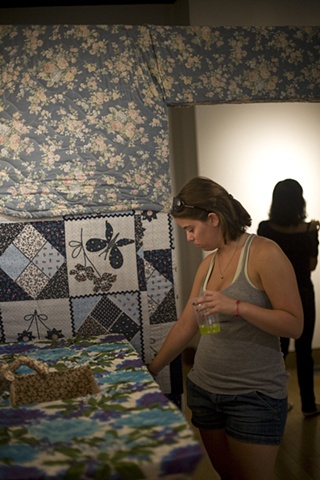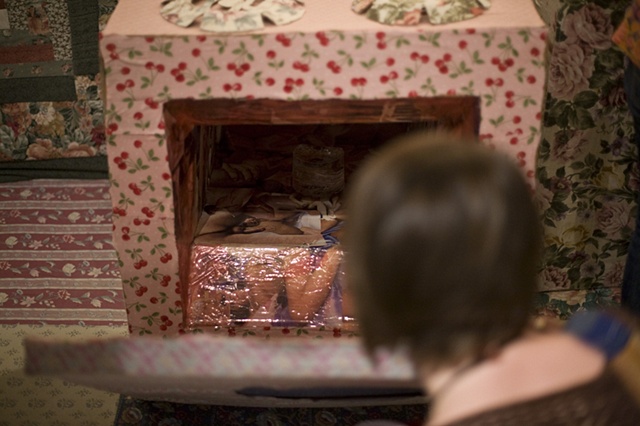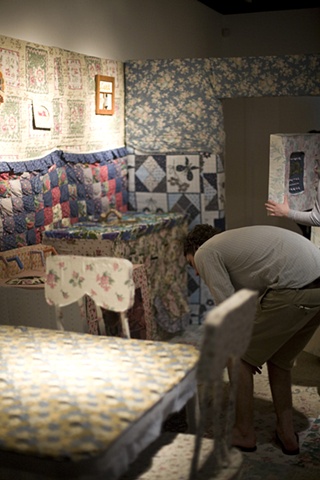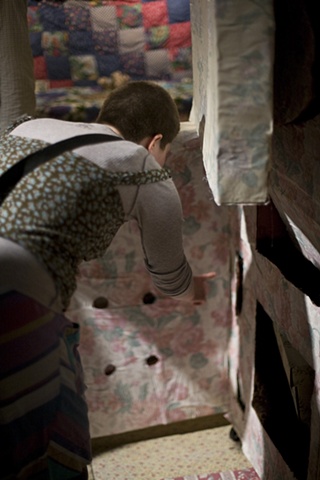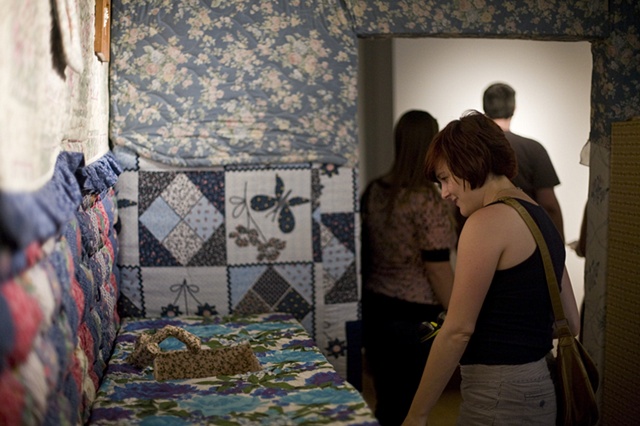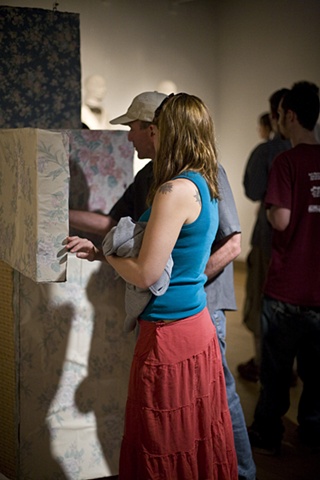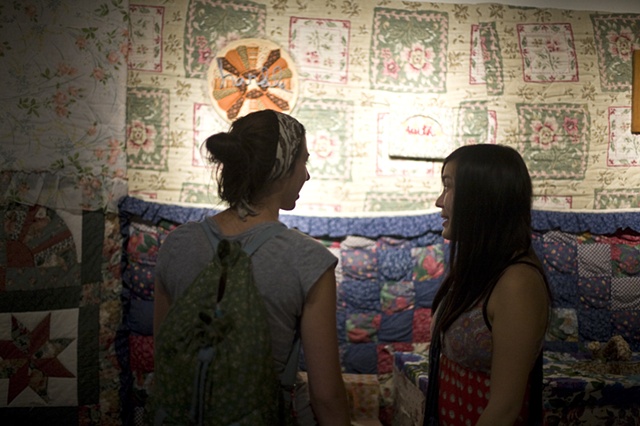oh, expectations
BFA Thesis Exhibition
I've decided to investigate the materiality I have associated with domestic households in my own experiences. Much of my domestic imagery is dated and reminiscent my own white, lower-middle class, suburban background. Most of the family houses I encountered seemed to incorporate the same principle designs (ducks, chickens, bunnies, bows, lace and, most significantly, flowers). These decorative elements represented happy, healthy domestic situations, and even now when I see them, my mind clouds over with nostalgic confusion.
I use these nostalgic materials in juxtaposition with darker, more realistic scenes of child development. In previous work I made a series of family portraits in which the photographs of happy, smiling people were replaced with realistically painted intestines because my own family anxieties caused me to have digestive problems.
In recent research I have focused on romanticism as a mechanism of power and control. I'm building an architecture of memory inhibited by gendered play. I'm trying to embody the awkward tension between feeling like we have surpassed feminist struggles and acknowledging, at least in myself, that there is patriarchal dirt in the cellar of my subconscious.
There is a promise of fulfillment equated with dependence under the guise of romance. This promise has molded my understanding of being a woman. This domestic sphere I now examine is reenacted with obsessive decoration while existing as a complete aesthetic failure.
I'm creating a kitchen out of used floral patterned materials from thrift stores, mostly sheets and blankets but also clothing, wallpaper and wrapping paper. My awkward-looking kitchen resembles a child's fort/playhouse, but the construction is also just slightly too sophisticated for a child to have actually made it. When examining the main components of the kitchen, the viewer will discover that these compartments do not function as initially expected. The refrigerator does not store items meant to put into the body, but instead stores abjections, or items released from the body. The sink cupboards do not function as storage spaces; when one opens the cupboards, one is opening up spaces that are typically forbidden and enclosed. In opening the oven, the viewer expects to find a wholesome, nourishing item; instead, the viewer is confronted with blatant sexuality. The flame is ignited.
This piece is a complicated exploration of the aesthetic of feminine space – occupying its expectations and its repressions. I’m taking up an older feminist trope by focusing on the kitchen, but I am using this supposed space of entrapment as a vessel in which to unravel the ways femininity is conditioned. This is a space – a child’s play space – an adult woman’s creation. As both a woman and a child I examine the same environment and promises from different life stages. Behind the promises and the expectations the subconscious and subliminal can’t help but seep through. It is a stage/set/play place in which the performance of roles occurs. I understand as a child what I have forgotten as an adult – it is all just a game.
